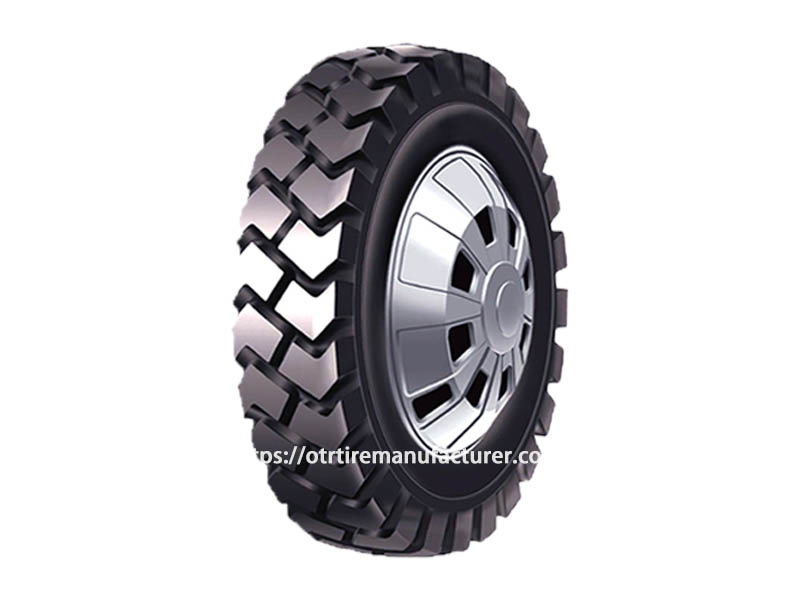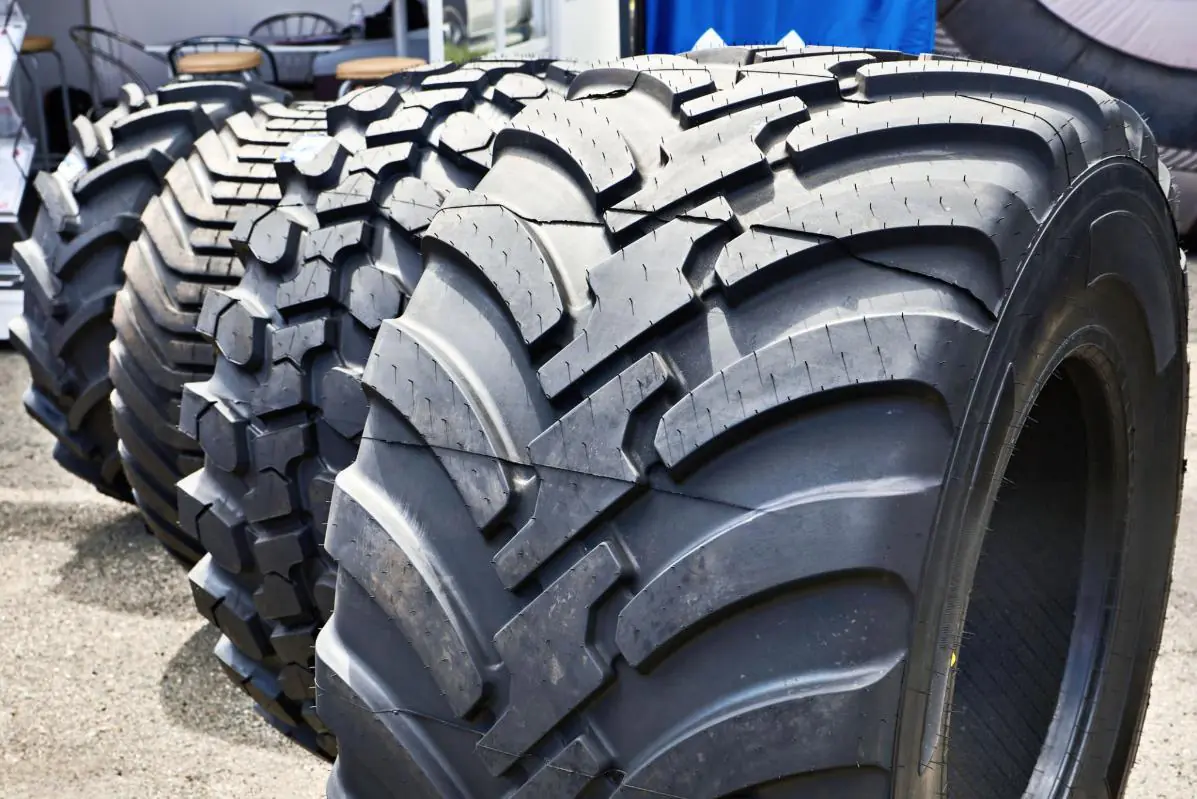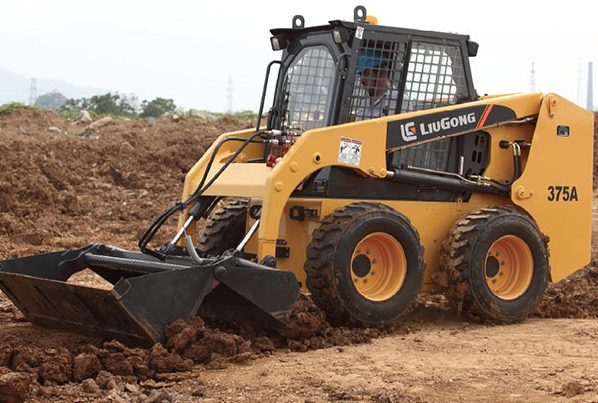Forklifts are absolutely important equipment in modern industries and city construction, Right forklift tire types play a crucial role of contacting the vehicle and the ground to run effectively and efficiently. It is difficult for you to find the best forklift tyre types to improve your operational performance among many different forklift tire types on the market. The type of forklift tires you need will depend on the conditions of your forklift equipment and working floor.
Forlander is the leading forklift tire manufacturer and supplier, we wholesale different forklift tire types with complete sizes and other specifications at great price to enhance workplace safety, reduce fuel consumption, and increase productivity of forklifts. In this article, let’s delve into the tire construction, compound, pattern or tire size to select the right forklift tire for you specific forklift equipment. We hope it will help you to choose the right types of forklift tire.
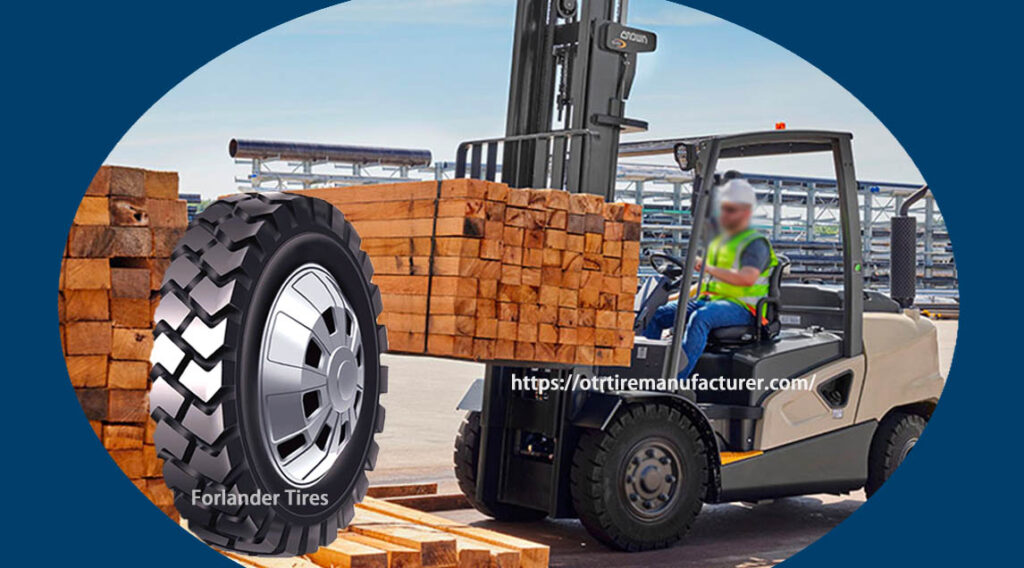
1. What Is A Forklift Tire?
A forklift tire is a specialized tire specifically designed for use on forklifts and other industrial vehicles. These tires play a critical role in ensuring the performance and safety of forklift operations. They bear the weight of the vehicle and its load, provide traction on various surfaces, and contribute to the overall stability of the forklift.
Selecting the appropriate forklift tire involves considering several factors. The type of surface the forklift will operate on, the weight and type of loads it will carry, and the specific requirements of the job all influence the choice of tire.
When looking for the right forklift tire to meet your equipment needs, it is important to consider factors such as solid performance in demanding conditions and excellent traction. Bridgestone offers a range of tires designed to cater to various requirements, ensuring optimal performance and productivity for your work.
2.What Are Different Forklift Tire Types
When considering forklift tire options, there are several types to choose from.
2.1 Common Types of Forklift Tires from Tire Construction View
Pneumatic tires: Pneumatic tires are air-filled and offer better shock absorption and traction compared to cushion tires. They are suitable for both indoor and outdoor use, making them versatile options for various forklift applications.
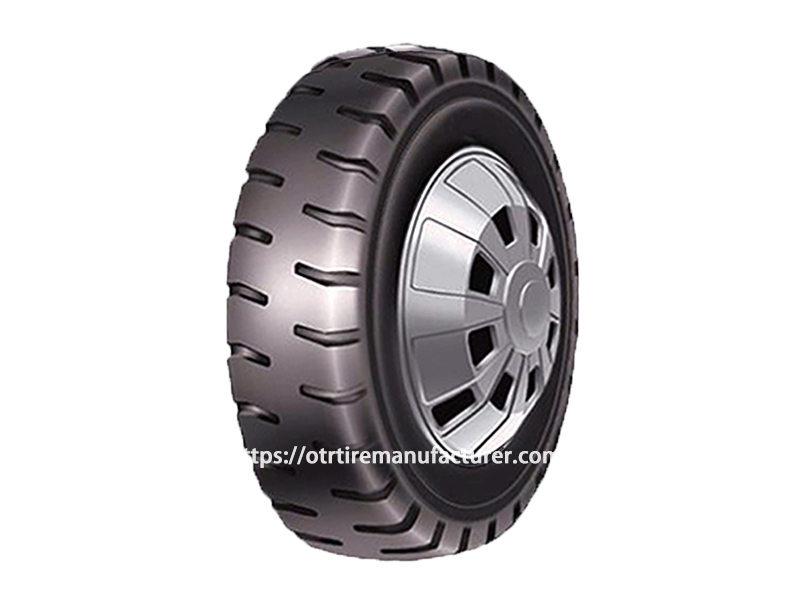
Forlander Pneumatic Tires KT598
Solid forklift tires: Solid tires are made of solid rubber or polyurethane and are puncture-proof. They are often used in challenging outdoor environments where there is a risk of encountering sharp objects or debris. Solid tires provide durability and can withstand heavy loads.
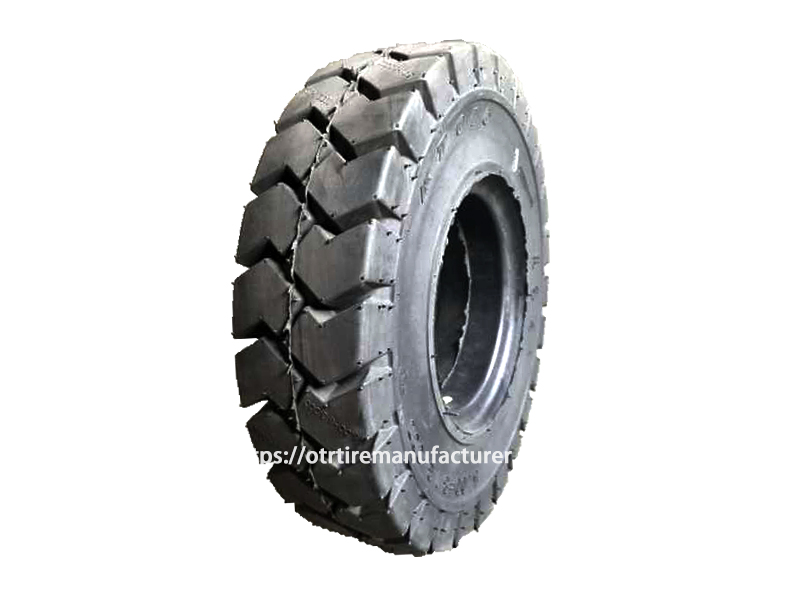
Forlander Solid forklift tires KT015
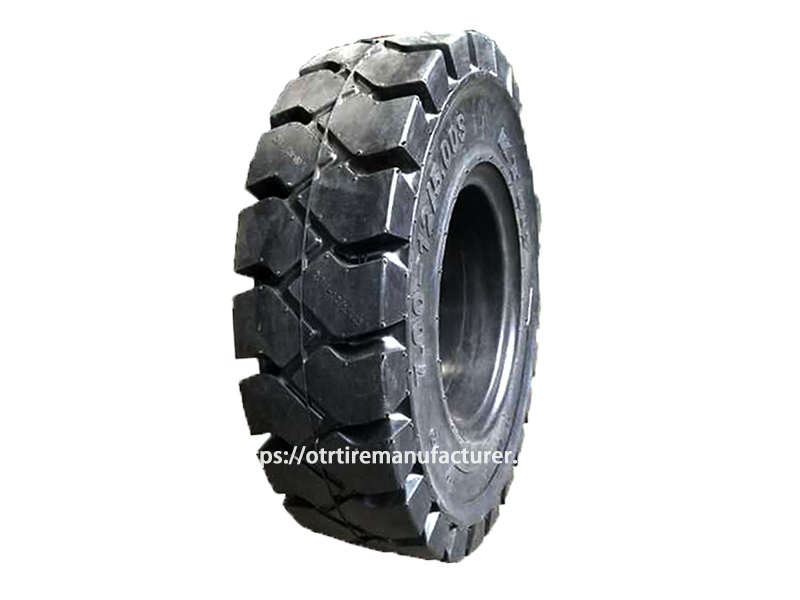
Forlander Solid forklift tires KT017
Each type of forklift tire has its own advantages and is best suited for specific operating conditions. The choice of tire type depends on factors such as the working environment, load capacity, surface conditions, and the forklift's intended use.
2.2 Classification of Types of Forklift Tires From the Forklift Equipment’ View
2.2.1 Load-Bearing Type
The load-bearing type of forklift tires is designed to have an exceptionally high load capacity, making them suitable for demanding and harsh environments. These tires prioritize safety and elasticity, ensuring they can withstand heavy loads and provide optimal performance even in challenging conditions. Forlander offers various tire sizes and specifications of 8.25-20, 9.00-20, 10.00-20, 11.00-20 for your forklift demands.
Tyre Size | Pattern Depth | Level | Load capacity (10km/h) | Inflation Pressure(KPa) |
8.25-20 | 16mm | 14PR | 3865 | 830 |
9.00-20 | 19.5mm | 16PR | 4725 | 860 |
10.00-20 | 21.5mm | 18PR | 3350 | 910 |
11.00-20 | 28.5mm | 18PR | 3650 | 910 |
2.2.2 Terminal Tractor Type
Terminal tractor tires are specifically designed for usage on low-bed trailers at terminals. These tires exhibit characteristics such as low rolling resistance, which helps reduce energy consumption and improve fuel efficiency. They also generate minimal heat during operation, enhancing safety and tire longevity. Additionally, terminal tractor tires possess an ultra-high load capacity, enabling them to handle heavy loads commonly encountered in terminal operations. These tires are engineered to meet the unique demands of terminal environments, providing reliable performance and durability.Forlander offers various tire sizes and specifications of 14.9-28, 16.9-30 for your forklift demands. Custom design and fabrication are available.
Size | PR | Pattern | Rim | Overall Diameter | Section width | Relevant pressure | Max loading |
14.9-28 | 10 | R1-2 | W13 | 1365 | 378 | 230 | 2120 |
16.9-30 | 10 | R1-2 | W15L | 1485 | 430 | 200 | 2455 |
2.2.3 Jet Bridge Type
Jet bridge tires are specifically designed for all-weather use and are suitable for various weather conditions. These tires offer flexibility and are capable of withstanding different environmental factors such as temperature fluctuations, moisture, and exposure to sunlight. With their robust construction, jet bridge tires provide an exceptionally long service life, ensuring reliable performance over an extended period. They are engineered to withstand the demanding conditions of airport operations, providing the flexibility and durability required for jet bridges to efficiently and safely connect aircraft to terminal buildings.
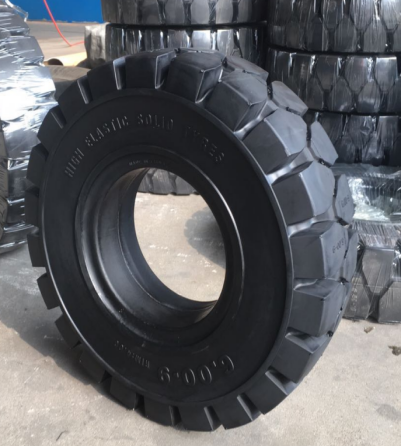
3. Advantages and Disadvantages of Different Forklift Tire types
It's important to consider the specific application, operating environment, and requirements when selecting the appropriate forklift tire type, so we need to understand the advantages and disadvantages of different forklift tire types.
3.1 Pneumatic Forklift Tires
2.1.1 Pros of Pneumatic Forklift Tires
Pneumatic forklift tires are a reliable choice for outdoor and rough terrain operations, providing excellent traction, shock absorption, and load-bearing capacity while offering the ability to adjust tire pressure for optimal performance. Pneumatic forklift tires offer several advantages:
- Excellent traction and grip, particularly on rough surfaces. This allows for better control and stability while maneuvering the forklift.
- Superior shock absorption, resulting in a smoother ride for the operator. It also reduces the impact on the cargo being transported, minimizing the risk of damage.
- Well-suited for outdoor use and rough terrains. The design of pneumatic tires allows them to handle uneven surfaces and obstacles commonly encountered in outdoor environments.
- Higher load-bearing capacity compared to other tire types. Pneumatic tires can support heavier loads, making them suitable for applications that require lifting and transporting substantial weights.
- Adjustable tire pressure. Pneumatic tires can be filled with air, allowing for the adjustment of tire pressure according to the specific operating conditions. This flexibility ensures optimal performance and load-bearing capabilities.
3.1.2 What Cons of Pneumatic Forklift Tires?
While pneumatic forklift tires offer numerous advantages, it's essential to consider these disadvantages and evaluate whether they align with the specific needs and operating conditions of your forklift fleet.Pneumatic forklift tires also have some disadvantages:
- Susceptibility to punctures or blowouts: Pneumatic tires are more vulnerable to punctures, especially in environments with sharp debris or nails. This can lead to downtime and the need for tire repairs or replacements.
Regular maintenance required: Pneumatic tires need regular monitoring and adjustment of tire pressure to ensure optimal performance and safety. Neglecting tire pressure maintenance can result in reduced traction, increased wear, and compromised stability.
- Higher initial cost: Pneumatic tires generally have a higher initial cost compared to other tire types, such as solid or cushion tires. This can impact the upfront investment required for forklifts equipped with pneumatic tires.
- Increased rolling resistance: Pneumatic tires tend to have higher rolling resistance, especially when compared to cushion or solid tires. This increased resistance can result in higher fuel consumption for internal combustion forklifts, potentially impacting operating costs.
3.2 Solid Forklift Tires
3.2.1 Pros of Solid Forklift Tires
Solid forklift tires have advantages such as puncture resistance and lower maintenance requirements, it's crucial to consider these Advantages and evaluate whether they are suitable for your specific operational needs and the conditions of your work environment.
- Puncture-proof and highly durable, making them ideal for heavy-duty applications.
- Suitable for environments with sharp objects or debris.
- Good traction and stability.
- No risk of punctures or blowouts.
- Lower maintenance requirements compared to pneumatic tires.
3.2.2 Cons of Solid Forklift Tires
While solid forklift tires offer advantages such as puncture resistance and lower maintenance, their limitations in terms of ride comfort, shock absorption, load-bearing capacity, and suitability for outdoor or rough terrain applications should be carefully considered. Solid forklift tires have several disadvantages to consider:
- Rougher ride: Solid tires provide less cushioning and shock absorption compared to pneumatic tires. This can result in a relatively rougher ride for the forklift operator, potentially causing discomfort and fatigue during extended periods of use.
- Reduced shock absorption: Solid tires offer less shock absorption, which can impact operator comfort and increase the risk of damage to the cargo being transported. Vibrations and impacts from uneven surfaces or obstacles may be transmitted more directly to the forklift and its load.
- Lower load-bearing capacity: Solid tires generally have a lower load-bearing capacity compared to pneumatic tires. This means they may not be suitable for handling extremely heavy loads or applications that require high load capacities.
- Limited suitability for outdoor or rough terrain: Solid tires may not perform as well as pneumatic tires on outdoor surfaces or rough terrain. The reduced cushioning and traction of solid tires can limit their ability to navigate uneven or challenging terrains, potentially affecting stability and maneuverability.
3. How to Choose Right Forklift Tire Types
Choosing the right forklift tire type is crucial for optimizing performance, safety, and efficiency in material handling operations. Several factors should be considered when selecting forklift tires:
3.1 Operating Environment
When choosing forklift tires, it's crucial to assess the operating environment, including surface conditions where the forklift will be used. Consider whether the forklift will primarily operate indoors on smooth concrete surfaces or outdoors on rough terrain.
For indoor applications on smooth surfaces, cushion tires are often suitable as they provide excellent stability and maneuverability. Pneumatic tires are more appropriate for outdoor operations on rough terrain, as they offer better shock absorption and traction.
Solid tires are a durable option that can handle various surface conditions, making them suitable for both indoor and outdoor use. Forlander offers a range of forklift tire types and sizes to cater to different operating environments, ensuring you can find the right tire for your specific needs.
By considering the surface conditions and the specific requirements of your forklift operations, you can choose the most appropriate forklift tire type from Forlander's comprehensive selection.
3.2 Tire Construction
Forklift tires are available in different constructions, including pneumatic, solid rubber, and polyurethane. Each type has its own advantages and disadvantages. Pneumatic tires offer a smoother ride but are prone to punctures, whereas solid rubber tires provide durability at the cost of a slightly rougher ride.
Pneumatic forklift tires resemble traditional vehicle tires and are filled with air. They have a higher load-bearing capacity and excellent traction, making them well-suited for outdoor use and rough terrains.
On the other hand, solid forklift tires are constructed from solid rubber compounds. They are highly durable and ideal for heavy-duty applications. Solid tires offer good traction and stability, but they may result in a slightly rougher ride compared to pneumatic tires.
Considering the specific needs of your operations, the choice between pneumatic and solid forklift tires will depend on factors such as the working environment, load capacities, and desired ride quality.
3.3 Load Capacity
The weight and type of loads the forklift will handle should be considered when choosing forklift tire. Ensure that the chosen tires have the appropriate load capacity to safely support the expected loads.
Evaluate the maximum weight the forklift will lift, including the weight of the loads and any attachments. It's important to select tires that can withstand the anticipated loads without compromising stability or performance.
Additionally, consider the type of loads being carried. Some loads may have unique characteristics, such as size, shape, or weight distribution, which can impact tire requirements.
Assessing the weight and type of loads, you can choose tires that are specifically designed to handle the load capacity of your forklift, ensuring safe and efficient operations. Always refer to the manufacturer's guidelines and specifications to make an informed decision.
3.4 Tire Pattern
Forklift tires come in different tread patterns, including flat, hollow arc, and deep tread patterns, each designed for specific surface conditions.
The flat pattern is ideal for smooth surfaces commonly found indoors, providing stable and smooth operation.
The hollow arc pattern is well-suited for rough surfaces typically encountered in factories, ports, and similar locations. This pattern enhances traction and maneuverability, allowing for better performance on uneven terrain.
For slippery surfaces, the deep tread pattern is recommended. Its design includes deeper grooves and aggressive tread patterns to increase traction and prevent slippage.
By considering the surface conditions where the forklift will be used, you can select the appropriate tire tread pattern to optimize performance and safety.
3.5 Speed and Maneuverability
When considering the speed and maneuverability of forklifts, these vehicles typically operate at limited speeds, typically no more than 30 kilometers per hour. However, the choice of forklift tire types can still have an impact on the overall speed and maneuverability.
Certain tire types are better suited for specific requirements, such as maneuvering in tight spaces or making frequent turns. For example, tires with a smaller profile or specialized tread patterns can enhance maneuverability, allowing for easier navigation in confined areas.
It's essential to consider the operational needs of your forklift, including the layout of the workspace and the frequency of turns and directional changes. By selecting the appropriate tire type, you can optimize the forklift's speed, maneuverability, and overall productivity in the specific operating environment.
3.6 Price Considerations
Forklift price, both in terms of initial cost and long-term expenses, is the important factor to consider. While cheaper tires may have a lower upfront cost, they may have a shorter lifespan and require more frequent maintenance or replacement, resulting in higher overall costs over time.
As a manufacturer and supplier of forklift tires, Forlander offers a wide range of tire options at competitive factory prices. They provide complete types of forklift tires to fulfill your specific requirements. Additionally, Forlander offers the option for Original Design Manufacturing (ODM) or Original Equipment Manufacturing (OEM) to meet your customization needs.
The best tire price of forklift tires, along with their quality, durability, and maintenance requirements, can make you an informed decision that balances both short-term and long-term costs, ensuring optimal value for your investment.
5 Conclusion
As the leadinf OTR tire manufacturer and supplier, Forlander Tire has a clear understanding about different forklift tire types. When selecting different forklift tire types depending on main factors such as operating conditions, load capacities, and surface types when selecting the most suitable forklift tire type for your application. It's also essential to consider the special compound, profile or tire size to provide satisfactory tire life. Evaluating these factors will help determine the most suitable tire type for the specific application, ensuring optimal performance, safety, and cost-effectiveness. Forlander forklift tires are best selling domestic and abroad.
Any questions, please contact us.
